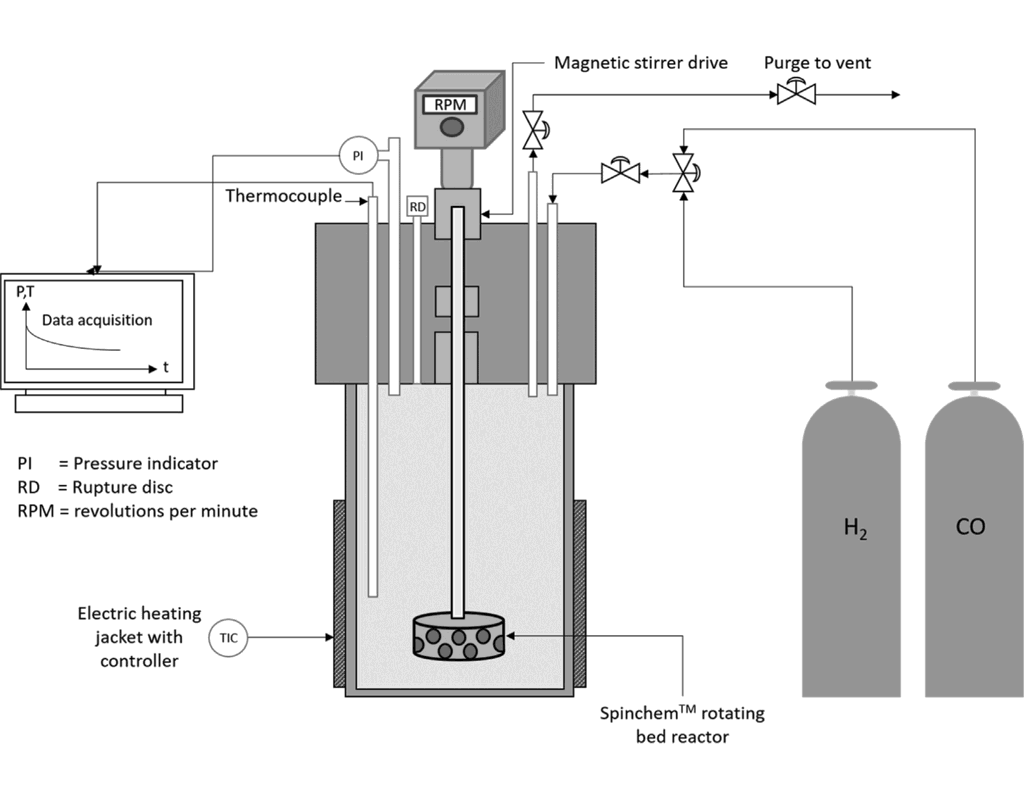“Rapid methods are very valuable in the determination of the kinetic and mass transfer effects for heterogeneously catalyzed reactions. The total pressure method is a classical tool in the measurement of the kinetics of gas-phase reactions, but it can be successfully applied to the kinetic measurements of gasphase processes enhanced by solid catalysts. A general theory for the analysis of heterogeneously catalyzed gas-phase kinetics in gradientless batch reactors was presented for the case of intrinsic kinetic control and combined kinetic-diffusion control in porous catalysts. The concept was applied to gasphase synthesis of methanol from carbon monoxide and hydrogen on a commercial copper-based catalyst (CuO/ZnO/Al2O3 R3-12 BASF). The reaction temperature was 180–210 °C and the initial total pressure was varied between 11 and 21 bar in a laboratory-scale autoclave reactor equipped with a rotating basket for the catalyst particles. The initial molar ratios CO-to-H2 were approximately 1:2, 1:3 and 1:4. The experimental data from methanol synthesis were compared with numerical simulations and a good agreement between the experiments and model simulations was achieved. The predicted equilibrium agrees with previously reported values.”

Highlights:
- The paper describes an unusual application of RBR technology: a gas phase reaction catalyzed by a solid phase catalyst. The RBR was used to remove convective transport resistance of the gases to the catalyst particles, simplifying the interpretation of kinetic data and the construction of a reaction model for the system.
- "The rotation speed of the spinning basket containing the catalyst particles was 600 rpm in most experiments. Preliminary experiments with different rotation speeds indicated that this rotation speed is high enough to completely suppress the external mass transfer resistance around the catalyst particles."

